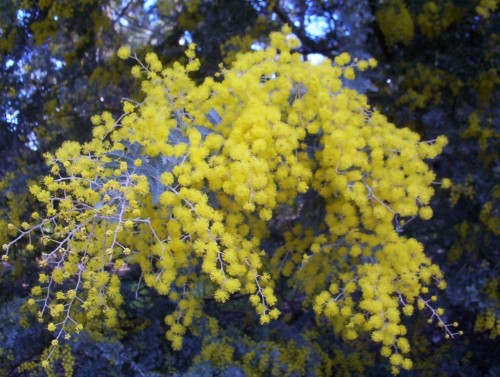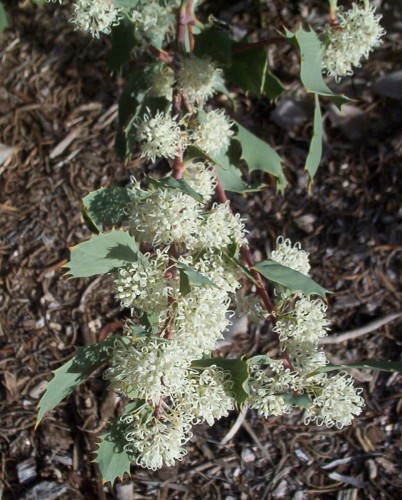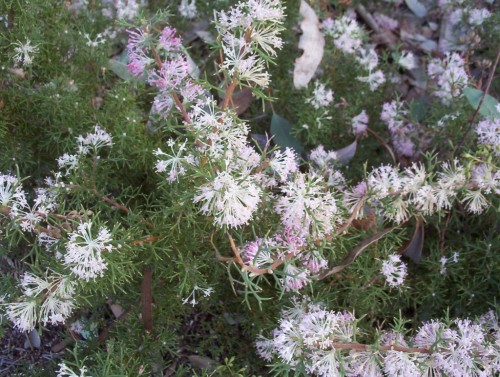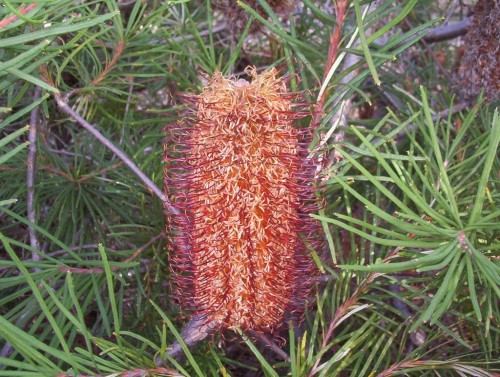Acacia baileyana (Cootamundra Wattle)
Acacias are beginning to flower and they are earlier around Adelaide and the Hills than here. This is partly the milder climate as well as a little more rain than has fallen here this winter.
Acacia baileyana is a lovely tree in flower. Unfortunately it has become an escapee plant into the wetter hills areas around Adelaide. That certainly does not happen here with this plant.
This is a really useful tree giving a wonderful floral display. It is a hardy and adaptable plant which makes a good windbreak or shelter tree. Pruning extends the life of the tree.
Hakea cristata
Another of the Hakeas in flower was Hakea cristata. Most of the Hakeas I have seen smother themselves in flowers. Some are quite inconspicuous with other features which catch your attention.
Hakea cristata was covered in white flowers, flowering from June to August. It is an open shrub which will accept quite severe pruning. The pink new growth is very pretty.
This is a fairly rare plant from Western Australia. Heavy frost damages young growth. It is an adaptable plant so long as it has good drainage.
Hakea lissocarpha (Honeybush)
A few Hakeas were coming into flower at Wittunga. This is a very interesting genus of plants very attractive to nectar feeding birds.
Hakea lissocarpha has white to pink flowers. The bushes make good nesting plants for small birds. The bushes grow .6-2m tall by 1.5-3m wide. Flowering is from May to September. They are prickly plants which prefer some shade although they will grow in full sun. They seem to be quite hardy plants, growing in most well drained soils. The plants are also hardy to most frost.
Banksia ericifolia (Heath Banksia)
Banksia ericifolia is another of the Banksias flowering at Wittunga Botanic Gardens at the moment.
There are a number of quite old plants with thick trunks and leaning branches. Rather attractive. The flowers vary in size from 10-30cm long.
This plant can grow 2-7m high and 1-2.5m wide. It prefers good drainage. It would be a good plant for exposed coastal conditions and for windbreaks and screening. I have seen them in the Eastern states used as a large hedge where that screening effect is desired. It is affected by alkaline soil but could be helped by treating with iron chelates.
Banksia spinulosa (Hairpin Banksia)
Banksia spinulosa (Hairpin Banksia) is a plant I have always admired. I have no hope of growing this one here successfully because it definitely does not like highly alkaline soils. This is another from the eastern states.
It is a medium to tall spreading shrub 1-4m high by 1-5m wide. The flowers have purplish black styles which can be seen in the photo, hence the name Hairpin Banksia. Again the honeyeaters love this one also as it is a prolific flowerer.




